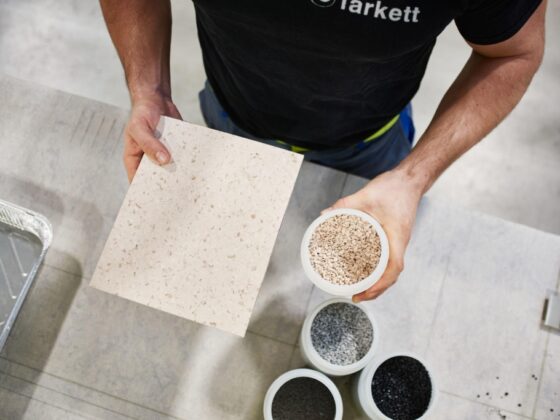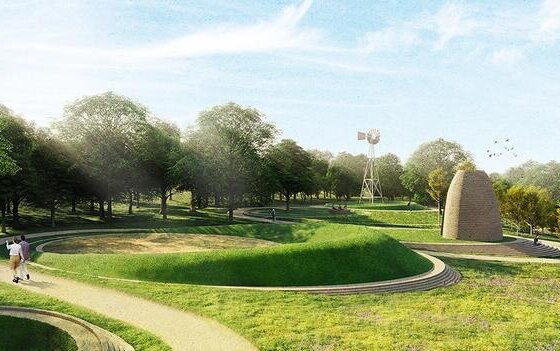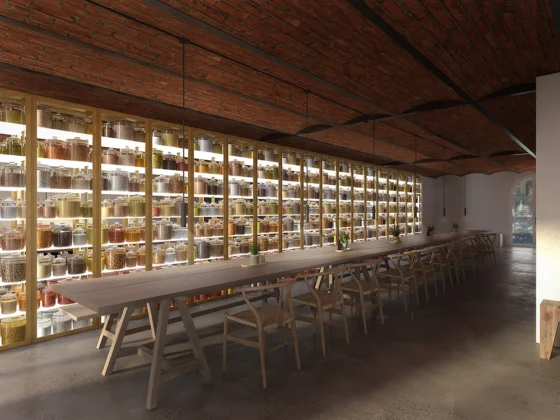Boston, Massachusetts, USA
Payette, a Boston-based architectural firm, was appointed byNortheastern University to create apedestrian bridge to connect two Boston neighborhoods and expand the campus site as well.

Payette’s project was recently awarded the 2021 American Architecture Award from The Chicago Athenaeum and The European Centre for Architecture Art Design and Urban Studies.
Constructed on an urban brownfield site consisting of an existing surface parking lot set between two garages, Northeastern University’s Interdisciplinary Science and Engineering Complex (ISEC) and the Pedestrian Crossing (PedX) completed the first two phases of the newly planned 600,000 SF academic precinct.
These are the first academic buildings located south of a major rail corridor in the City of Boston, bridging two diverse neighborhoods with a new pedestrian bridge and landscape with a fully accessible path up and over the Amtrak and MBTA rail lines.

A manmade slope in the ground plane creates both an accessible path to the pedestrian bridge and shields the site from the active rail lines.
The landscape is defined by paths and clusters of spaces like “pebbles in a stream” that lead into the buildings with primary entrances at both the street and bridge levels.
A restored section of Boston’s Southwest Corridor Park is also integrated with the landscape, buffering the building from the street and serving as a pedestrian and bike route.

The ambitious and award-winning PedX is a symbol of Northeastern’s ongoing mission to strengthen communities by bringing them together.
The University desired an expressive architectural experience that not only provides access over the rail lines but also creates exciting new public spaces.
The Pedestrian Crossing’s sense of movement and flow is informed by the design language of the precinct, which is evident in the organic forms and rich curved surfaces of the neighboring ISEC and the forthcoming EXP building, which will break ground in 2020.
The bridge has a dramatic form that uses weathering steel plates to protect the train tracks and power lines from pedestrians and vice versa. The specialty steel’s inherent corrosion resistance avoids the need for rail agency shut-downs for periodic re-painting.

The use of weathering steel also imbues a reddish-brown patina to the structure which nicely complements the surrounding infrastructure and the new ISEC.
Instead of employing the conventional ‘curl-over’ guard rail fencing typical on bridges that cross railways, the new bridge’s steel panels angle outward and grow in height to attain the necessary protection over the catenary wires.
At its northern terminus, the bridge lands delicately between existing buildings, and its solid parapet flares open and dissolves into a perforated pattern that invites pedestrians south across the main span.

Traveling over the rail corridor, the bridge arcs and grows taller, its parapet panels canting outward and rotating to expose slender glass vision panes with views to the ISEC and Boston skyline.
The bridge parapets lean outwards 10 degrees from vertical to enhance a sense of openness while adhering to the strict protection requirements established by the rail operators.
The taller western parapet gently rises to a height of 18 feet towards the bridge’s south abutment, creating a dramatic entry marker.
A curving, sloped walkway continues toward Columbus Ave while the east parapet of the bridge sweeps toward the entry of the ISEC.



Project: Northeastern University Pedestrian Crossing (PedX)
Architects: Payette Associates, Inc.
Client: Northeastern University
Contractor: Skanska USA Building Inc.
Photographers: Robert Benson, Warren Jagger, Chuck Choi, and Ngoc X Doan












